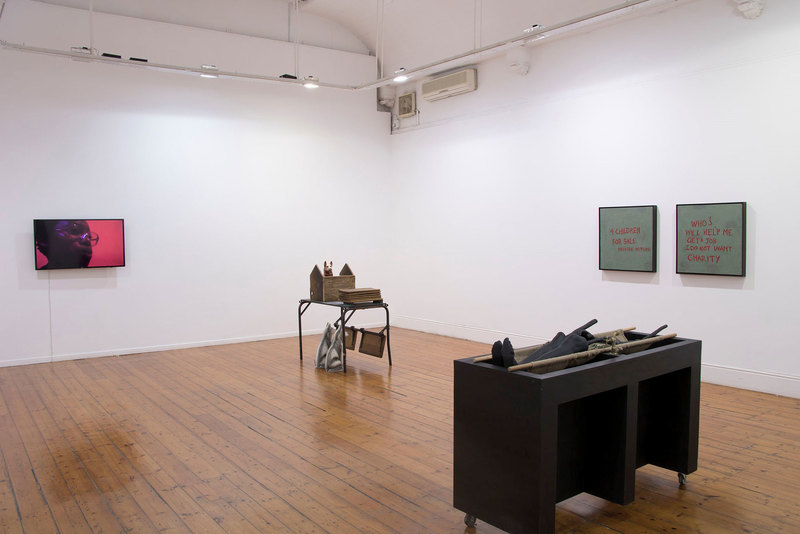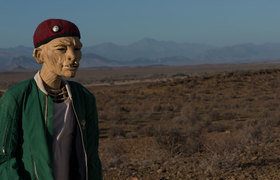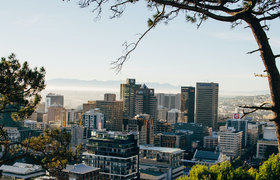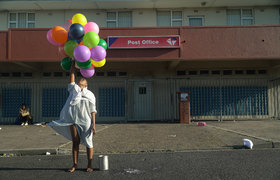Decolonising art is about a ‘politics of recognition’
18 May 2021 | Story Helen Swingler. Photo Michaelis Galleries. Read time 6 min.
The decolonisation of art and art studies has received a boost following the publication of the 49th issue of OnCurating, titled Decolonial Propositions and co-edited by University of Cape Town (UCT) alumnus and Michaelis Galleries curator Nkule Mabaso and Jyoti Mistry, Professor of Film at the University of Gothenburg, Sweden.
OnCurating is an independent journal based at the Zurich University of the Arts in Switzerland and is supported by the university’s Postgraduate Programme in Curating at the Institute for Cultural Studies in the Arts. The journal collaborates with different institutions to focus on questions around curatorial practice and theory and is read in 120 countries.
This is the third issue Mabaso has co-edited. She has been a member of the advisory editorial board of OnCurating since 2015.
Launched online earlier this month, the anthology of 20 contributions highlights the connections between artistic research and decolonial strategies in art practices. The contributors represent different art forms in diverse historical and geo-political contexts; among them are UCT’s Professor Jay Pather, jackï job and Nwabisa Plaatjie of the Centre for Theatre, Dance & Performance Studies, Michaelis School of Fine Art’s Associate Professor Nomusa Makhubu and UCT alumni Unathi Kondile, and Linda Makgabutlane.
The contributions are based on two conference events that took place in 2017, during the tumultuous period of the Fees Must Fall protests in South African higher education. The first conference-event was ArtSearch in March 2017 at the University of the Witwatersrand (Wits); the subsequent event, the Third Space Symposium – organised by UCT’s Institute for Creative Arts – took place in August of the same year.
Legacies of racial privilege
In their introduction, Mistry and Mabaso write: “The contributions are set against the backdrop of the legacies of racial privilege that have been sedimented in institutional structures, and the growing urgency for transformation in art institutions and universities: [their] hiring practices, student recruitment, the curriculum, the recognition of art practices that acknowledge and accommodate different epistemologies and aesthetics.”
“Decolonisation is not a mythical endeavour, but it is ultimately a politics of recognition.”
They continue: “This publication [recognises] that in spite of the numerous challenges, the space to support engaged dialogue remains possible; and that decolonisation is not a mythical endeavour, but it is ultimately a politics of recognition. It demands that aesthetics and the politics of practice dismantle singularities and the monolithic – it seeks out the nuances, the co-existence of contradictions, and invites us to look, see and listen and to not deny the legacies of privilege born from structures of power.”
The section on art institutions focuses on the challenges of transforming art schools and the difficulties of overcoming colonial institutional structures and their epistemological frameworks.
“The most important thing about the disruptions fostered by the creative praxis is that these reveal that institutional structures are not fixed,” said Mabaso. “Institutions are living, responsive organisms that should not subsume the individual impulse, but rather [respond responsibly] to collective efforts that unsettle the multiple violences contained within ‘resilient’ institutional mechanisms.”
Single authoritative narrative
One of the artworks included in the issue is a John Muafangejo print – stark in its black and white lines, both literal and figurative. Its title is An interview at the University of Cape Town in 1971, and it depicts the artist as the interviewee, the sole black figure on one side of the table; and on the other, a host of eight white interviewers looking ahead, but not at him. Their nib pen, paintbrush and rendering tool resemble blades.
The co-editors’ commentary reads, “The open book (on the table), perhaps it is Muafangejo’s portfolio, sits in the hands of a conjoined member of the interviewer team, and suggests a single authoritative narrative wielded by the pale-faced custodians of the institution.”
The co-editors note that Muafangejo’s application was rejected by Michaelis, and he then took up residency at Rorke’s Drift Art and Craft Centre. Founded by the Church of Sweden Mission, the Rorke’s Drift Centre has produced some of the country’s most prolific and renowned black fine artists, printmakers, ceramicists, and weavers.
It was UCT’s loss.
As well as continuing the call to decolonise higher education, the Artsearch Symposium and the Third Space Symposium were watershed moments in the struggle to decolonise art practice and epistemology.
“It drew from unresolved histories and experiences that had been rendered invisible under colonialism and apartheid.”
The Artsearch Symposium drew top international scholars and practitioners who presented creative strategies to “transform art institutions and recognise previously unacknowledged artistic practices and forms” and to break with the western-centric education model.
At UCT, the Third Space Symposium showcased different aesthetic practices and strategies that shifted the focus away from Western ways of viewing and presenting dance, theatre, film and art. As the co-editors said, “It drew from unresolved histories and experiences that had been rendered invisible under colonialism and apartheid, and through race and class privileges.”
Four years have passed since the Wits and UCT symposia, and this issue of OnCurating presents an opportunity to consider the gains from the nexus of protest and art practice and theory.
Mistry and Mabaso write, “This publication marks rather a pause, a moment of bringing together the contributions that provided a reflective rest to recall all the efforts that were drawn from not just the spark of this movement but provides a recognition that in spite of the numerous challenges, the space to support engaged dialogue was possible.”
Other contributors to the issue were: David Andrew, Henri Kalama, Sharlene Khan, Nobunye Levin, Zen Marie, Miguel Marrengula, Bekele Mekonnen, Bongani Mkhonza, Nduka Mntambo, Nomcebisi Moyikwa, Lindokuhle Nkosi, and Ruth Sacks.
 This work is licensed under a Creative Commons Attribution-NoDerivatives 4.0 International License.
This work is licensed under a Creative Commons Attribution-NoDerivatives 4.0 International License.
Please view the republishing articles page for more information.










